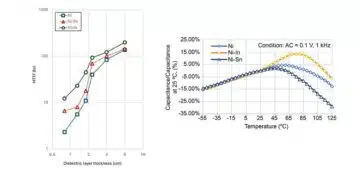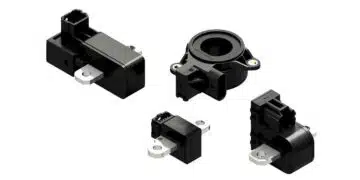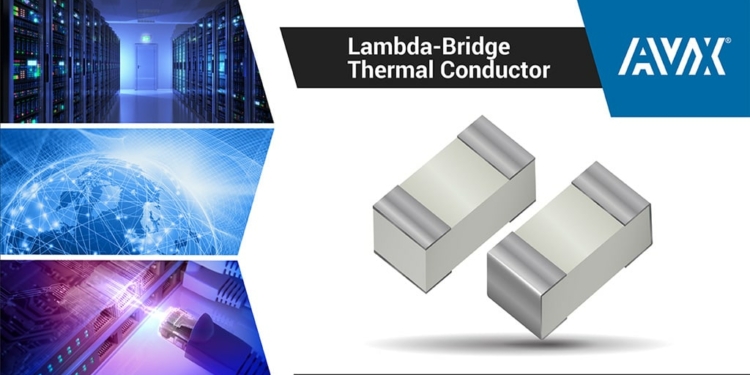Source: AVX news
Exhibiting high thermal conductivity, low thermal resistance, & capacitance so low that the devices are virtually transparent at RF/microwave frequencies, the series provides efficient, compact, & cost-effective thermal management solutions
FOUNTAIN INN, S.C. (October 17, 2018) – AVX Corporation, a leading manufacturer and supplier of advanced electronic components and interconnect, sensor, control, and antenna solutions, has released the new λ-Bridge (Lambda-Bridge) Series thermal conductors. Constructed with high-quality aluminum nitride (AlN) or beryllium oxide (BeO) materials, Lambda-Bridge thermal conductors provide efficient, cost-effective thermal management solutions with reliable, repeatable performance in four small EIA form factors: 0302, 0402, 0603, and 0805. Designed to direct heat to thermal ground planes, heat sinks, or other points of thermal interest, help protect adjacent components from hot-spot thermal loads, and improve overall circuit reliability, the series exhibits high thermal conductivity, low thermal resistance, and capacitance so low that the devices are virtually transparent at RF/microwave frequencies.
The new Lambda-Bridge thermal conductors also feature RoHS-compliant SMT packages that are fully compatible with automated pick-and-place processing, and are ideal for use between active-device and adjacent ground planes, between a specific contact pad and case or between contact pads, and as direct component contacts in GaN power amplifiers, high-power RF amplifiers, filters, synthesizers, industrial computers, switch-mode power supplies, and pin and laser diodes.
“Our new Lambda-Bridge thermal conductors provide efficient, compact, and cost-effective thermal management solutions, improve overall circuit reliability, and offer an additional layer of protection for adjacent components in a wide range of RF, microwave, and power applications,” said Larry Eisenberger, principal technical marketing engineer at AVX.
Standard configurations for the new Lambda-Bridge thermal conductors currently include 0302, 0402, 0603, and 0805 EIA packages with two standard thicknesses ranging from 20–40mils (T1) and 15–25mils (T2), in edge-wrap (fully-metalized edge) and no-wrap styles, and with either gold-over non-magnetic barrier terminations or gold-over-magnetic terminations. Custom configurations are also available.
AlN Lambda-Bridge thermal conductors exhibit thermal resistance values spanning 10°C/W to 25°C/W (T1) and 16°C/W to 32°C/W (T2); thermal conductivity values spanning 40mW/°C to 100mW/°C (T1) and 30mW/°C to 60mW/°C (T2); and capacitance values spanning 0.06–0.13pF (T1) and 0.05–0.08pF for edge-wrap versions. Non-wrapped versions have even lower capacitance values.
BeO Lambda-Bridge thermal conductors exhibit thermal resistance values spanning 7°C/W to 16°C/W (T1) and 11°C/W to 21°C/W (T2); thermal conductivity values spanning 61mW/°C to 153mW/°C (T1) and 46mW/°C to 92mW/°C (T2); and capacitance values spanning 0.05–0.10pF (T1) and 0.04–0.07pF for edge-wrap versions.
Packing options include: 1,000 pieces on a 7” reel, 500 pieces on a 7” reel, and matrix tray, and lead-time for the series is currently 12 weeks.































